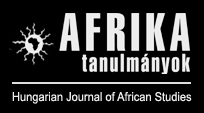Challenges in the Sustainable Economy of Northern Ghana– Impacts of Soybean Trade on Bambara Groundnut: A Case Study
DOI:
https://doi.org/10.15170/AT.2023.17.1.5Keywords:
Ghana, agriculture, local farmers, soybean, Bambara GroudnutAbstract
The global seed trade has reached and conquered Northern Ghana, squeezing out local suppliers. Considering ongoing population growth, rapidly urbanizing communities, changing diets, and vast quantities of imported food products, the endeavours of enterprises that try to reduce the local food production deficit should be more appreciated. Rice, maize, and soybeans are three types of grain that dominate the global seed trade. Furthermore, the natural conditions and vegetation of the subtropical region are close to optimal. While rice and maize have been cultivated for a long time, soybeans are a new crop in the semi-arid climate zone of the Guinea-Savannah.
The motivations and ambitions are clear: pushing improved soybean seeds into the traditional farming system of Northern Ghana to meet the zero hunger sustainable development goal while widening the market for western seed producers. In the Ghanaian context, microfinance is built on making customers dependent on services. On the bone hand, it is a tool to extend farm sizes through mechanization, fertilizers, and modern cultivation technologies to increase yield; on the other hand, microfinance could cause financial difficulties within society and farmer associations, and it has negative effects on unsupported and unfinanced activities such as cultivating indigenous crops.
Downloads
Published
How to Cite
Issue
Section
License

This work is licensed under a Creative Commons Attribution-NonCommercial-NoDerivatives 4.0 International License.
















